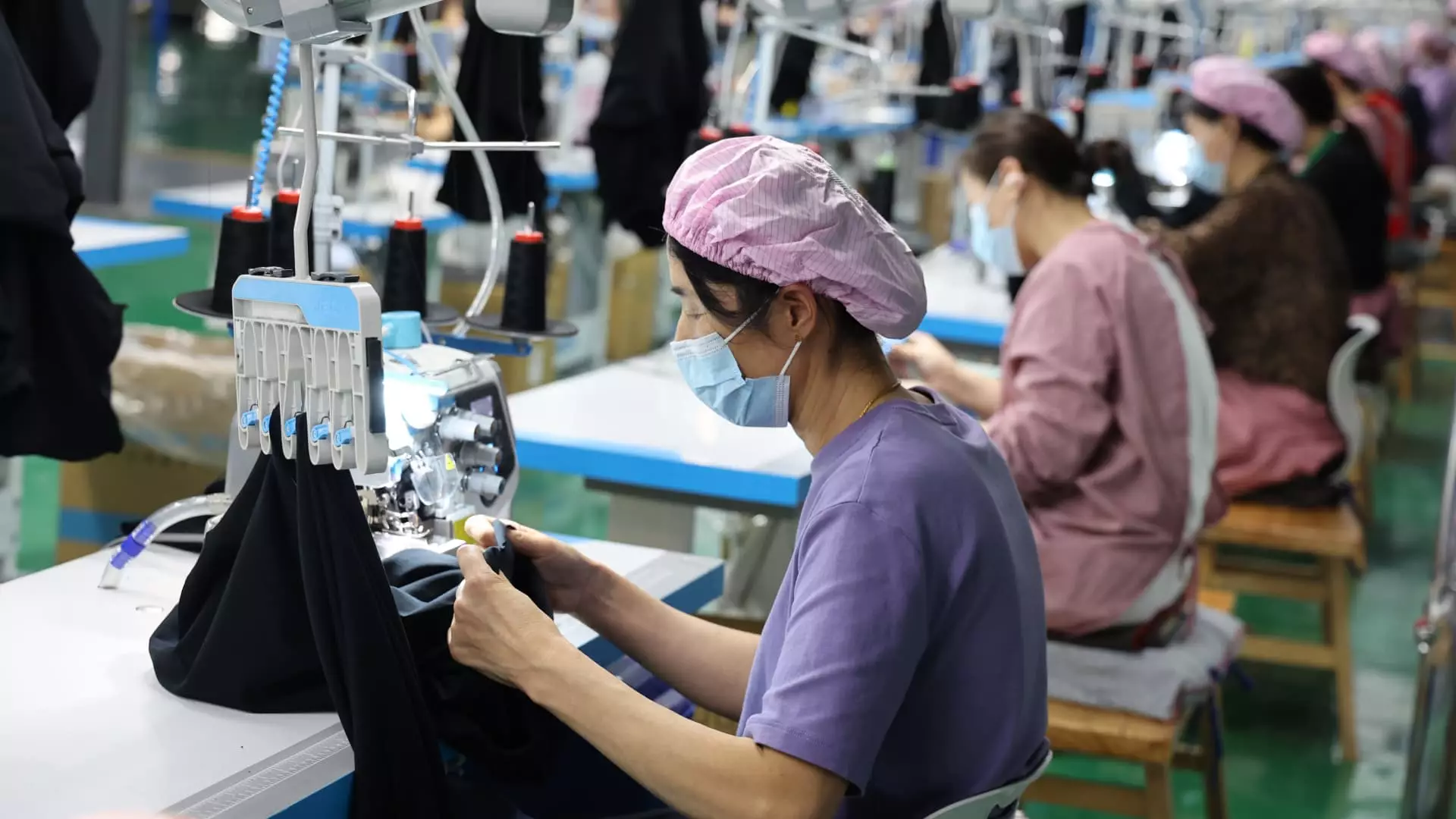The escalating U.S.-China trade tensions have now reached a fever pitch, forcing numerous Chinese manufacturers to hit the brakes on production as the repercussions of hefty tariffs sink in. With factories halting operations and sending employees home—some for weeks at a time—the situation paints a bleak picture that demands urgent attention. Analysts are reporting significant disruptions across key export hubs like Yiwu and Dongguan, raising alarming concerns about the ripple effects on jobs and the wider economy.
Cameron Johnson, a senior partner at Tidalwave Solutions, highlights the staggering reality: manufacturers producing toys, sports goods, and low-cost consumer products are bearing the brunt of this downturn. A staggering 10 to 20 million workers are caught in the crossfire, grappling with uncertainty as their livelihoods hang in the balance. To put this into perspective, the total labor force in China’s cities last year was around 473.45 million, suggesting that at least 2% of the workforce is directly affected by this trade crisis. The ramifications are not just limited to economic numbers; they represent real lives facing upheaval and despair.
Torrential Tariffs: A Shock to the System
The swift implementation of tariffs exceeding 100% on a wide array of goods has made small businesses gasp for breath. Ash Monga of Imex Sourcing Services argues that the impact of these tariffs eclipses even the catastrophic effects of the COVID-19 pandemic. For many small enterprises—particularly those operating on tight margins—the sudden financial burden could spell the end.
Monga’s insights underscore a broader theme: businesses are finding themselves unable to cope with these shocking changes. In response, many are seeking alternative markets, but the transition is anything but seamless. Tariffs are not just innovative policies; they have become a critical barrier to survival in one of the world’s largest economies. The urgency is palpable, with calls for policy shifts growing louder as tiny businesses scramble for solutions.
Innovative Strategies in an Unforgiving Landscape
Amidst the chaos, some businesses are attempting to innovate and adapt. For instance, Woodswool, an athleticwear manufacturer, pivoted to domestic e-commerce through live-streaming platforms, a strategy recently encouraged by Chinese tech giants. In one week’s time, the company managed to secure over 30 orders using this innovative channel—a tiny beacon of hope amid a sea of despair. However, such strategies are more of a band-aid rather than a cure; while they may help to recover some lost income, these shifts cannot replace the substantial revenue generated from U.S. customers.
With half of Woodswool’s production aimed at the U.S. market, pivoting to alternative sales channels doesn’t change the fundamental issue: the U.S. tariffs have made their business model unsustainable. This shift reflects a growing trend among businesses that have started leaning heavily on platforms like Baidu and JD.com to navigate these turbulent waters. Nevertheless, the challenge lies in translating a product ecosystem built around Western consumer tastes into something meaningful for domestic clients.
A Competitive Landscape: The Battle for Survival
The landscape of Chinese manufacturing is changing rapidly, and competition is intensifying. Michael Hart, president of the American Chamber of Commerce in China, has noted a pronounced increase in competitive fervor among Chinese firms. Companies are hustling to adapt to new realities, but as they pivot toward domestic markets, they face entirely new challenges: the tastes and preferences of the Chinese consumer can diverge vastly from those in the U.S.
With pressure mounting and resources dwindling, companies are increasingly looking to shift operations to countries like India and Brazil, where manufacturing costs may provide a buffer against tariffs. According to observers, the trade tensions have spurred a more global production strategy, encouraging companies to diversify their sourcing strategies to remain competitive. Yet, this isn’t merely a matter of relocating factories; it also involves cultivating relationships and reevaluating the entire supply chain.
Opportunities and Challenges in Emerging Markets
While the U.S.-China trade war creates chaos, it simultaneously opens some doors for nimble businesses willing to adapt. For Liu Xu, the owner of an e-commerce platform selling bathroom products to Brazil, this volatility has not deterred his ambitions. Instead, he sees potential for growth despite challenges like fluctuating exchange rates and shipping costs. His experience exemplifies how the shifting trade dynamics are prompting some companies to explore uncharted waters.
Moreover, new players in the market, like Cotrie Logistics in Ghana, are thriving as they build logistics routes and sourcing channels driven by the changing trade environment. CEO Bright Tordzroh recognizes the opportunity presented by rising U.S.-China tensions, viewing it as a catalyst to grow his business and create additional value for companies looking for alternatives to traditional supply routes.
In this precarious landscape, the call for proactive measures and policy adjustments is becoming increasingly urgent. The vulnerabilities exposed by the trade war highlight a need for resilience and adaptability, not just in China but also across the global supply chain. The future lies not merely in surviving the immediate fallout but in fostering an environment where businesses can thrive despite the turbulence.

